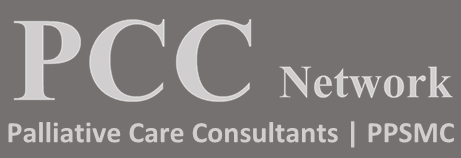Understanding Safe Opioid Use in Pain Management
Opioids are a safe and effective intervention for managing pain and account for less than 1% of opioid addiction/psychological dependence when opioids are utilized for pain management (2).
When discussing opioids with colleagues, patients and families, it is important to clarify some of the normal outcomes expected from long-term opioid use such as tolerance or physical dependence and to explain they are not the same as addiction/psychological dependence.
Tolerance
A normal and expected bodily response to long-term opioid administration as the disease changes over time and the individual needs stronger opioid doses to achieve the same pain control they had when first starting to take opioids (1, 2). When discussing this with patients and families, you might consider comparing it to the first time they had a caffeine/sugar drink and would feel energized and jittery after one cup, and over time, they find they need more to get the same response.
Physical Dependence
A normal and expected bodily response to long-term opioid administration, whereby the person will experience withdrawal symptoms (agitation, perspirations, tremor, muscle cramps etc.) if the opioid is suddenly stopped or if the dose is reduced too quickly. This should not be confused with an addiction/psychological dependence (1, 2). For example, if you decide to remove sugar or caffeine all at once from your diet, your body will experience similar withdrawal effects as one would from opioids, and it’s a normal process.
Addiction/Psychological Dependence
With common opioid misconceptions in society and the media, it is also important to clarify that addiction/psychological dependence is very different from tolerance or physical dependence and falls under a diagnosis for substance use disorder (2). It is characterized by negative behaviours and cravings to take the drug for its psychological effects and not its intended purpose, regardless of the negative situations or harm it might cause them or the people they care about (1, 2).
Many factors like genetics, environment and behaviour, can influence a person’s risk of addiction/psychological dependence. Having an increased risk of addiction does not mean patients should not be treated; it means that added precautions are needed such as screening, teaching, contracts and regular follow up (2, 3).
Pseudoaddiction
Try to always keep this concept in mind when you might have a patient displaying behaviours that are often associated with addiction/psychological dependence (watching the clock, irritability, always asking for stronger dosages etc.). The difference is that they are displaying these behaviour(s) to better manage their poorly-controlled pain. Be consistent with your pain assessments and advocate for improved pain management, and if it is pseudoaddiction, the behaviour(s) will stop once their pain is better controlled; whereas that would not occur in addiction/psychological dependence (1, 2, 3).
Clinicians
For more information, please visit:
Medications
What is happening with the opioid crisis in Canada? What should I know to use opioids safely with palliative care patients?
Guidelines:
Canadian Guideline for Safe and Effective Use of Opioids for Chronic Non-Cancer Pain
Source:
- Pallium Canada (2016). The Pallium Palliative Pocketbook: a peer-reviewed, referenced resource. 2nd Cdn ed. Ottawa, Canada.
- Pasero, C. & McCaffery, M. (2011). Pain Assessment and Pharmacologic Management. St. Louis, MO: Mosby inc. Managing Pain: The Canadian Healthcare Professional’s Reference (2008). Toronto, ON: Healthcare & Financial Publishing.
- Managing Pain: The Canadian Healthcare Professional’s Reference (2008). Toronto, ON: Healthcare & Financial Publishing.
Download Tip of the Month




